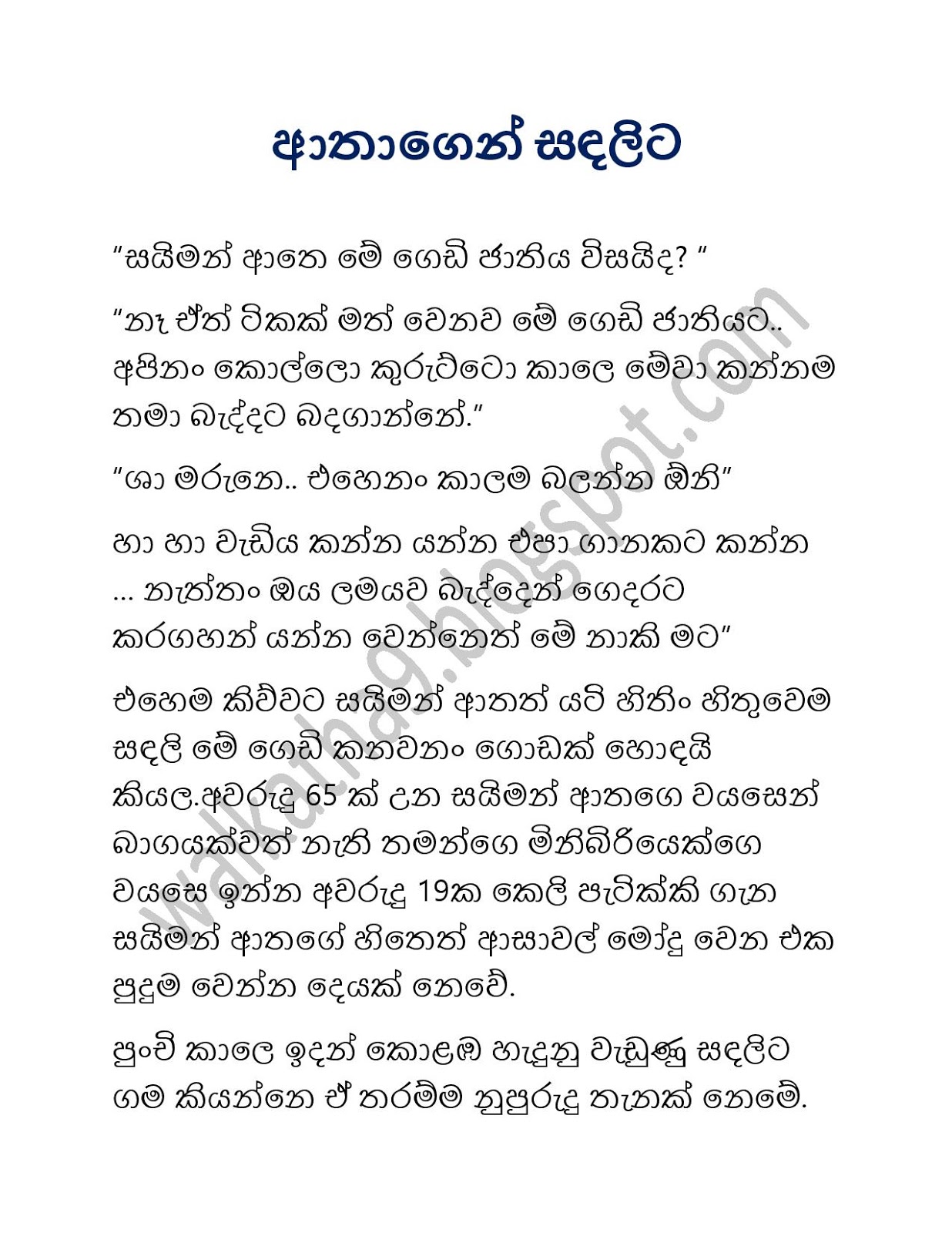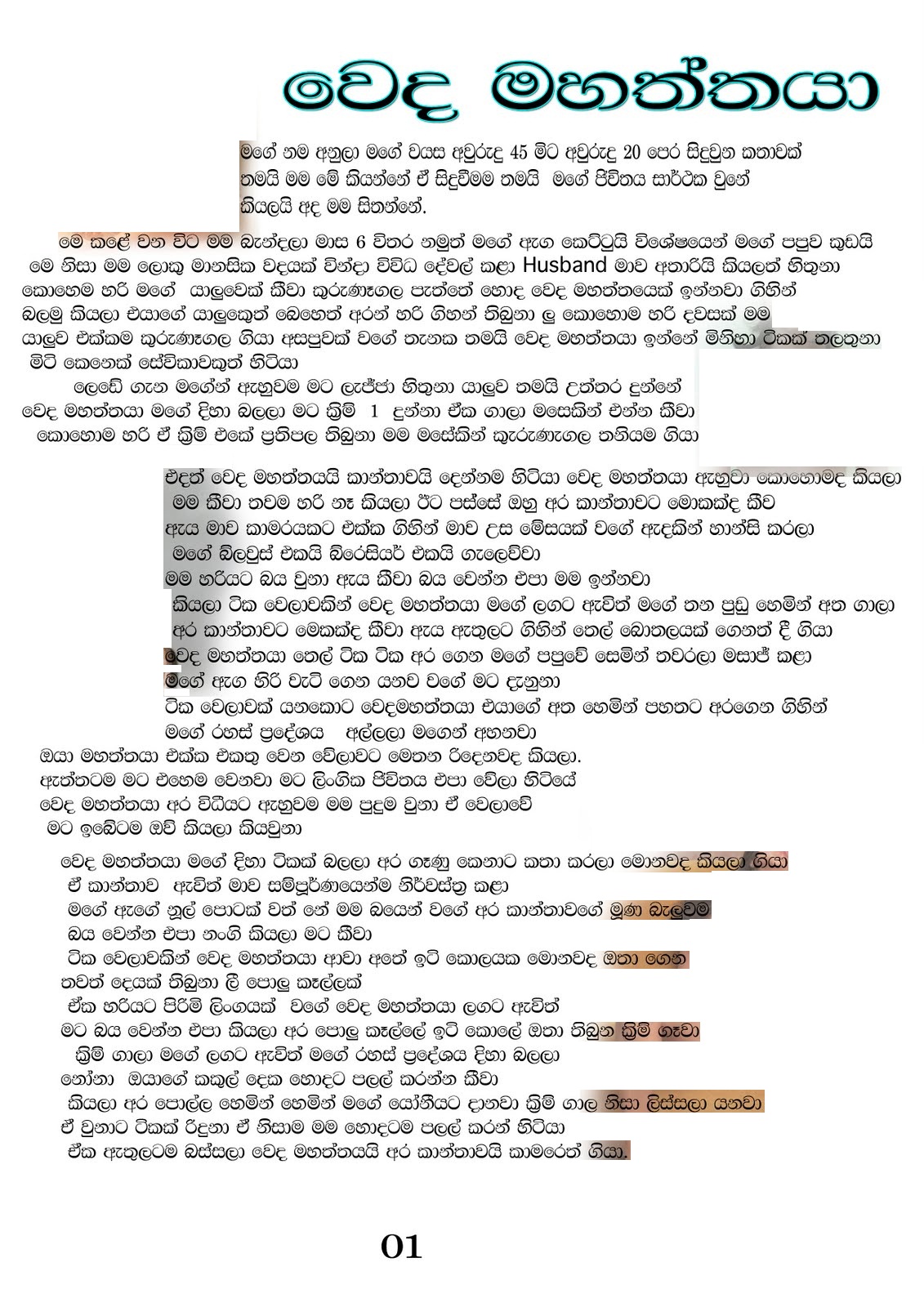Sinhala Walkatha is an intriguing aspect of Sri Lankan culture, reflecting the rich tapestry of its traditions and folklore. These stories, often passed down through generations, encapsulate the essence of Sinhala heritage, highlighting the values, morals, and beliefs of the people. Each walkatha serves as a window into the lives of the characters it portrays, making them an essential part of Sri Lanka’s narrative landscape.
As we delve deeper into the world of Sinhala Walkatha, we uncover tales that resonate with both the young and the old. These narratives often center around themes of love, bravery, and the eternal struggle between good and evil. The allure of walkatha lies not only in their entertainment value but also in their ability to impart wisdom and life lessons, making them timeless treasures of Sri Lankan storytelling.
In this article, we will explore various aspects of Sinhala Walkatha, including its history, significance, and various popular tales. Through this exploration, we hope to shed light on why these stories hold a special place in the hearts of the Sinhala-speaking community. Join us as we embark on this fascinating journey into the world of Sinhala Walkatha.
What is Sinhala Walkatha?
Sinhala Walkatha refers to a collection of folk tales and narratives that reflect the cultural heritage of the Sinhala-speaking people of Sri Lanka. These stories often feature mythical creatures, historical figures, and moral dilemmas, providing insight into the values and beliefs of the community. They serve not only as entertainment but also as a means of preserving history and tradition.
What Are the Key Elements of Sinhala Walkatha?
The key elements of Sinhala Walkatha include:
- Characters: Often include heroes, villains, and mythical creatures.
- Themes: Common themes include love, bravery, betrayal, and moral lessons.
- Setting: Typically set in historical or mythical locations within Sri Lanka.
- Lessons: Each story conveys a moral or lesson relevant to the audience.
Who Are the Notable Characters in Sinhala Walkatha?
Several characters have emerged as iconic figures in Sinhala Walkatha. Some of these characters are:
- Ravana: The ten-headed demon king from the Ramayana, symbolizing evil.
- Vishnu: The protector who often intervenes in human affairs.
- Princess Viharamahadevi: Known for her bravery and sacrifice, she represents virtue.
- Gamani: A folk hero who embodies the spirit of the people.
Can You Trace the Origins of Sinhala Walkatha?
The origins of Sinhala Walkatha can be traced back to ancient Sri Lanka, where oral storytelling was a primary means of communication. These tales were often shared in village gatherings, festivals, and religious ceremonies, becoming an integral part of community life. Over time, they evolved, incorporating elements from various cultures due to the island's rich history of trade and interaction with foreign influences.
How Do Sinhala Walkatha Reflect Cultural Identity?
Sinhala Walkatha play a significant role in shaping and reflecting the cultural identity of the Sinhala people. Through these stories, values such as hospitality, loyalty, and respect for elders are emphasized. Additionally, they serve as a reminder of the historical struggles faced by the community, fostering a sense of unity and pride.
What Role Do Sinhala Walkatha Play in Modern Society?
In modern society, Sinhala Walkatha continue to thrive, adapting to contemporary forms of media such as television, film, and literature. They are often included in educational curricula, ensuring that younger generations appreciate their cultural heritage. Moreover, these stories have become a source of inspiration for artists, writers, and filmmakers, contributing to the dynamic cultural landscape of Sri Lanka.
Are There Any Popular Sinhala Walkatha You Should Know About?
Yes, several popular Sinhala Walkatha have gained prominence over the years. Some notable stories include:
- Maname: A traditional folk drama that explores complex themes of love and sacrifice.
- Ravana's Legend: A tale that delves into the life and times of the infamous demon king.
- Viharamahadevi's Sacrifice: A story of a princess who sacrificed her life for the greater good.
How Can You Experience Sinhala Walkatha Today?
Experiencing Sinhala Walkatha today can be done through various means:
- Attend Folk Performances: Look for local folk theater performances that showcase these stories.
- Read Books: Explore written collections of Sinhala Walkatha available in bookstores and libraries.
- Watch Films: Many Sinhala films depict these traditional tales, providing a visual representation of the narratives.
Conclusion: Embracing the Legacy of Sinhala Walkatha
Sinhala Walkatha are not just stories; they are a vital part of Sri Lanka's cultural heritage. They encapsulate the values, beliefs, and struggles of the Sinhala people, making them an essential aspect of the nation's identity. As we continue to embrace and share these tales, we ensure that the legacy of Sinhala Walkatha lives on for future generations to appreciate and cherish.
You Might Also Like
Unraveling The Truth: Did John Travolta's Daughter Die?Discovering The Gage And Tollner Menu: A Culinary Journey
The Naughty Travelers: A Journey Through Mischief And Adventure
Unraveling The Mystique Of The December 31 Florida Man
Exploring Siamese Cat Breeders In Michigan: A Guide For Cat Lovers
Article Recommendations
- Thay Ksada
- Tiffany Link Earrings
- Kristy Mcnichol
- 1470855 Zack Lugos Biography Age Height Net Worth Girlfriend Brother
- La Freeway Protest
- Oleksandr Zinchenko
- 1230857 Tyler Perry Net Worth Age Height House Wife Son
- Josh Allen Old Tweets
- 1534693 Piece Female Characters Deserve Attention


